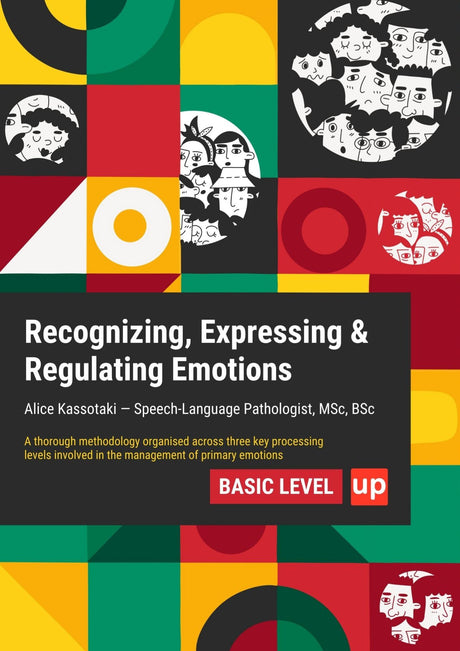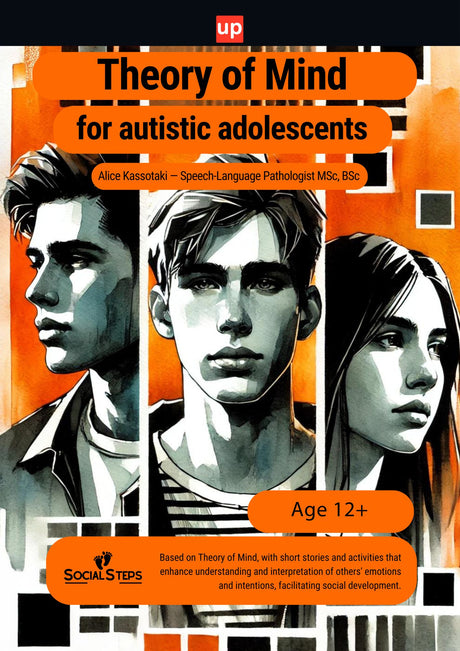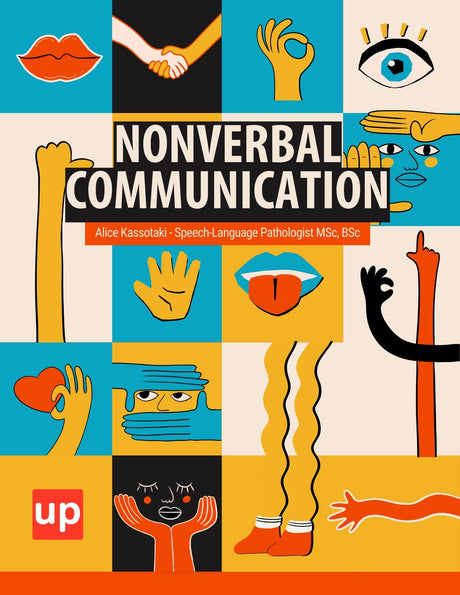Dyslexia is far more than just reversing letters or struggling with spelling. It’s a distinct neurological profile, a different way of wiring that affects how the brain processes language. For decades, simplified notions of being "left-brained" or "right-brained" have clouded our understanding. The reality is infinitely more complex and fascinating. This learning disability, which affects how individuals connect letters to sounds, is not a sign of low intelligence but a reflection of unique brain function. With approximately 15-20% of the population having some form of dyslexia, understanding these differences is crucial for fostering effective learning and support. By moving beyond myths, we can explore the intricate neural landscape of the dyslexic brain and appreciate its unique approach to the challenge of reading.
Key Points
- Dyslexic individuals use a different neural pathway for reading, often showing reduced activation in the left hemisphere's language regions and increased activity in the right hemisphere and frontal lobes as compensatory mechanisms.
- The core challenge in dyslexia lies in phonological processing difficulties, which disrupt the brain's ability to map sounds to written language, making reading a complex process for dyslexic readers.
- Despite reading challenges, the dyslexic brain exhibits unique strengths such as enhanced visual-spatial reasoning, creativity, and big-picture thinking, highlighting the importance of embracing neurodiversity and tailored educational support.
Introduction: Deconstructing the "Left-Brained" Myth and Embracing Neurodiversity

The idea that logical people are "left-brained" and creative people are "right-brained" is a persistent pop-psychology myth. While it's true that certain functions are more dominant in one hemisphere, the brain operates as a highly integrated network. For language, the left hemisphere typically plays a leading role in neurotypical individuals. However, dyslexia demonstrates that the brain is remarkably adaptable, often recruiting different areas to accomplish the same task. Embracing neurodiversity means recognizing that there isn't one "correct" way for a brain to function. The dyslexic brain isn't deficient; it operates on a different, often more distributed, system for processing written symbols. Understanding this is the first step toward dismantling stigma and building effective literacy strategies.
The Brain's "Standard" Language Processing Circuit: A Baseline for Comparison
To appreciate the differences in the dyslexic brain, we must first understand the typical neural architecture for reading. In most proficient readers, a well-oiled network in the left hemisphere manages the complex task of converting symbols on a page into meaning.
The Integrated Reading Network: Key Regions for Fluent Reading
Three key areas in the left hemisphere form the core of this reading circuit. The inferior frontal gyrus (near Broca's area) is involved in speech production and articulating words. The parieto-temporal region is crucial for analyzing words, breaking them down into their constituent sounds. Finally, the occipito-temporal region, often called the "word form area," becomes specialized in rapid, automatic recognition of familiar words, allowing for fluent reading without conscious effort.
The Orchestration of Phonological Awareness and Orthography
Efficient reading depends on the seamless integration of two concepts: phonological awareness (understanding the sound structure of language) and orthography (recognizing the visual representation of words). The brain must rapidly map the visual symbols (graphemes) it sees to their corresponding sounds (phonemes). In the typical reading brain, this process becomes increasingly automated with practice, freeing up cognitive resources for comprehension.
The Typical Journey of a Word: From Visual Input to Meaning
When a proficient reader sees a word, the visual cortex processes the shapes. This information travels to the occipito-temporal region, which recognizes it as a familiar word. Simultaneously, the parieto-temporal system is on standby to sound out unfamiliar words. The meaning is then accessed and integrated with context, a process orchestrated across the brain's language centers. This entire journey happens in milliseconds.
Decoding the Dyslexic Brain: A Different Operating System for Language

The dyslexic brain approaches reading not through a broken system, but through a different one. Neuroimaging has revealed that individuals with this learning disability utilize alternative neural pathways, engaging different brain regions to decode text.
The "Circuit Detour": Alternative Neural Pathways for Language Processing
Instead of relying heavily on the efficient, fast-acting posterior reading systems in the left hemisphere, the dyslexic brain often shows underactivation in these areas. To compensate, it reroutes the processing task. This "circuit detour" frequently involves increased activation in the frontal lobes, particularly Broca's area, suggesting a greater reliance on conscious articulation and subvocalization to decipher words. There is also often more engagement from the right hemisphere.
Specific Brain Regions and Their Altered Roles
In dyslexic children and adults, fMRI studies consistently show less activity in the left parieto-temporal and occipito-temporal regions during reading tasks. The brain compensates by recruiting analogous areas in the right hemisphere, as well as frontal regions. This compensatory strategy is functional but less efficient; it's like taking a scenic country road instead of a direct highway. The brain gets the job done, but it requires more time and cognitive energy.
The Phonological Processing Puzzle: How Phonemes Are Uniquely Handled
At the heart of dyslexia is a difficulty with phonological processing—the ability to identify and manipulate the individual sounds, or phonemes, within spoken words. This is a crucial pre-reading skill. For the dyslexic brain, segmenting a word like "cat" into its three distinct sounds (/k/, /æ/, /t/) is not intuitive. This makes it incredibly difficult to map those sounds back onto the letters c-a-t, disrupting the entire decoding process.
Beyond Phonology: The Role of Auditory and Visual Processing
While the phonological deficit is primary, dyslexia can also involve subtle challenges in visual and auditory processing speed. The brain may struggle to process rapidly changing sounds or quickly perceive a string of letters in the correct order. This is not a problem with vision or hearing itself, but with the speed and efficiency of the neural processing of that sensory information.
Understanding Connectivity Disruptions: White Matter Differences
It's not just about which brain regions are active, but how they communicate. Research has identified differences in the brain's white matter—the bundles of nerve fibers that act as communication cables. In individuals with dyslexia, the tracts connecting the key language and visual processing areas may be organized differently, potentially slowing down or disrupting the flow of information needed for fluent reading.
Neuroimaging Unveiled: Scientific Evidence of Brain Differences
Thanks to advanced neuroimaging techniques, our understanding of dyslexia has moved from theory to observable fact. These tools provide a window into the brain, revealing the functional and structural differences that define this learning disability.
Functional Magnetic Resonance Imaging (fMRI): Visualizing Brain Activity
fMRI has been revolutionary. By tracking blood flow, it shows which parts of the brain are active during a specific task. When individuals with dyslexia read inside an fMRI scanner, the images clearly depict the underactivation of the classic left-hemisphere reading network and the corresponding over-activation in frontal and right-hemisphere areas. This provides concrete evidence of the brain's compensatory "detour."
Structural Brain Differences: Gray Matter and White Matter Variations
Beyond function, there are also subtle structural brain differences. Studies have found variations in the volume of gray matter (the brain's processing centers) in regions critical for language. As mentioned, differences in the integrity and organization of white matter tracts also suggest that the brain's fundamental wiring plan for language processing is altered from an early age.
The Unnatural Challenge: Why Reading Poses a Unique Hurdle for Dyslexic Brains

Spoken language is an evolutionary adaptation; our brains are naturally wired for it. Reading, however, is a human invention that is only a few thousand years old. It requires the brain to co-opt and repurpose neural circuits originally designed for other tasks, like object recognition and speech.
The Cognitive Load of "Forcing" the Brain into a Standard System
For the dyslexic brain, being taught to read using methods designed for the "typical" neural circuit creates an immense cognitive load. The brain is essentially being asked to use pathways that are less efficient for it. This struggle is reflected in educational outcomes, where in England, just over 1 in 5 (21.6%) of pupils with a Specific Learning Difficulty (SpLD) such as dyslexia achieved key qualifications in English and Maths, compared to over half of their non-SEN peers.
Rapid Automatized Naming (RAN) and Reading Fluency Obstacles
Another key challenge is with Rapid Automatized Naming (RAN), the ability to quickly name a series of familiar items like letters, numbers, or colors. Difficulty with RAN is a strong predictor of reading fluency issues. It reflects a less efficient connection between the brain's visual and language systems, making the rapid, automatic retrieval of words a significant hurdle.
Reframing Reading: Recognizing the Brain's Innate Strengths
Instead of viewing the dyslexic brain as failing at reading, we can reframe the issue. The challenge arises because the invented system of reading heavily favors one particular neural pathway. By understanding the dyslexic brain's innate processing strengths—such as holistic thinking and visual-spatial reasoning—we can develop better teaching methods that leverage these abilities.
Beyond the "Deficit": The Unique Strengths of the Dyslexic Brain
Focusing solely on the challenges of dyslexia overlooks a crucial part of the picture: the remarkable strengths that often accompany this different way of thinking. The same brain wiring that makes decoding text difficult can foster exceptional abilities in other domains.
Enhanced Visual-Spatial Reasoning and Problem-Solving
Many individuals with dyslexia excel at tasks involving 3D manipulation, engineering, and design. Their ability to see the "big picture" and mentally rotate objects can make them adept architects, artists, and scientists.
Cultivating Creativity and Innovative Thinking
Because they don't rely on linear, step-by-step processing, dyslexic individuals often make surprising connections between ideas. This capacity for "out-of-the-box" thinking is a powerful engine for creativity and innovation in any field.
Big-Picture Perspective and Metaphorical Understanding
While they may struggle with the details of individual words, many with dyslexia have a strong grasp of overarching concepts, narratives, and systems. They often think in terms of analogies and metaphors, allowing them to understand complex ideas intuitively.
Resilience and Adaptability Developed Through Different Processing
Navigating a world designed for a different type of brain builds incredible resilience, persistence, and problem-solving skills. From a young age, dyslexic children learn to adapt and find alternative strategies to succeed, developing a valuable grit that serves them throughout life.
Empowering the Dyslexic Brain: Effective Support and Intervention Strategies
Understanding the science behind dyslexia is not just an academic exercise; it is the foundation for effective support. Because we know that the dyslexic brain processes language differently, we can move beyond one-size-fits-all teaching methods and provide targeted intervention. Structured, explicit, and multisensory literacy instruction, such as the Orton-Gillingham approach, helps build the neural pathways for reading by directly teaching the rules of language and linking sounds, symbols, and even physical movements. This kind of evidence-based support leverages the brain's neuroplasticity—its ability to change and form new connections—to help dyslexic children and adults build the skills for fluent reading. Early identification and tailored support are critical to helping every individual with this learning disability reach their full potential, transforming a reading disability into a manageable difference.
Conclusion
The dyslexic brain is not broken or flawed; it is a testament to the brain's incredible diversity and adaptability. By moving beyond the simplistic myth of "left vs. right," we can appreciate the complex neural reality of dyslexia: a different operating system for language that trades efficiency in decoding text for potential strengths in areas like spatial reasoning, creativity, and big-picture thinking. Neuroimaging has provided undeniable proof of these brain differences, shifting the conversation from blame to biology. This understanding is profoundly empowering. It informs the targeted, multisensory interventions that can rewire neural circuits, and it allows us to reframe the challenges of dyslexia within a broader context of unique cognitive strengths. The ultimate goal is not to "fix" the dyslexic brain, but to understand its language and provide the tools and support necessary for it to thrive in a world of literacy.
Frequently Asked Questions (FAQ)
What side of the brain do dyslexics use?
Dyslexic individuals often show reduced activation in the left hemisphere regions typically responsible for reading and language processing. To compensate, they tend to engage more of the right hemisphere and frontal lobes, using alternative neural pathways to decode written language.
How do the left and right hemispheres differ in dyslexic brains?
In typical readers, the left hemisphere predominantly manages language tasks such as phonological processing and word recognition. In contrast, dyslexic brains show underactivation in these left hemisphere areas and increased activity in the right hemisphere, which may serve as a compensatory mechanism.
Is dyslexia a neurological disorder?
Dyslexia is considered a specific learning difference with a neurological basis. It involves differences in brain structure and function, particularly in areas related to language and reading, but it is not indicative of low intelligence or a disorder in the traditional sense.
What brain regions are involved in reading difficulties in dyslexia?
Key brain regions affected include the left temporoparietal and occipitotemporal areas, which are crucial for phonological processing and rapid word recognition. Dyslexic individuals often show altered activity and connectivity in these regions.
How do brain imaging studies help us understand dyslexia?
Brain imaging techniques like functional magnetic resonance imaging (fMRI) and diffusion tensor imaging (DTI) reveal differences in brain activity and white matter connectivity in people with dyslexia compared to typical readers. These studies help identify the neural basis of reading difficulties and inform targeted interventions.
Can dyslexic individuals develop typical reading skills?
With early identification and evidence-based, multisensory interventions that leverage neuroplasticity, many dyslexic individuals can improve their reading skills significantly. Support tailored to their unique brain processing can help build efficient neural pathways for reading.
Do dyslexic brains have any unique strengths?
Yes, many dyslexic individuals exhibit strengths in visual-spatial reasoning, creativity, big-picture thinking, and problem-solving. These abilities arise from the different ways their brains process information, emphasizing the importance of embracing neurodiversity.
Are the brain differences in dyslexia present from birth?
Research suggests that many brain differences associated with dyslexia are present early in development, indicating a neurobiological basis. However, some differences may also result from reduced reading experience due to the challenges dyslexic individuals face.
How can educators support dyslexic students effectively?
Educators can support dyslexic students by using structured, explicit, and multisensory teaching methods that address phonological awareness and decoding skills. Understanding brain differences helps tailor instruction to leverage strengths and accommodate challenges.
Original content from the Upbility writing team. Reproducing this article, in whole or in part, without credit to the publisher is prohibited.
References
-
Eden, G. F., Olulade, O. A., Evans, T. M., Krafnick, A. J., & Alkire, D. R. (2016). Developmental dyslexia. In G. Hickok & S. L. Small (Eds.), Neurobiology of language (pp. 815–826). Academic Press.
-
Pugh, K. R., Mencl, W. E., Shaywitz, B. A., Shaywitz, S. E., Fulbright, R. K., Constable, R. T., ... & Gore, J. C. (2000). The angular gyrus in developmental dyslexia: task-specific differences in functional connectivity within posterior cortex. Psychological Science, 11(1), 51–56.
-
Shaywitz, S. E., Shaywitz, B. A., Pugh, K. R., Fulbright, R. K., Constable, R. T., Mencl, W. E., ... & Gore, J. C. (1998). Functional disruption in the organization of the brain for reading in dyslexia. Proceedings of the National Academy of Sciences, 95(5), 2636–2641.
-
Temple, E., Poldrack, R. A., Salidis, J., Deutsch, G. K., Tallal, P., Merzenich, M. M., & Gabrieli, J. D. (2003). Disruption of the neural response to rapid acoustic stimuli in dyslexia: evidence from functional MRI. Proceedings of the National Academy of Sciences, 100(10), 6096–6101.
-
Rumsey, J. M., Nace, K., Donohue, B. C., Wise, D., Maisog, J., & Andreason, P. (1997). A positron emission tomography study of phonological processing in dyslexia. American Journal of Psychiatry, 154(6), 734–740.
-
Gabrieli, J. D. (2009). Dyslexia: a new synergy between education and cognitive neuroscience. Science, 325(5938), 280–283.
-
Norton, E. S., Beach, S. D., & Gabrieli, J. D. (2015). Neurobiology of dyslexia. Current Opinion in Neurobiology, 30, 73–78.
-
Gabrieli, J. D., & Norton, E. S. (2012). Reading abilities: importance of brain and behavior for early intervention. Developmental Neuropsychology, 37(6), 533–551.
-
Boets, B., Op de Beeck, H., Vandermosten, M., Scott, S. K., Gillebert, C. R., Mantini, D., ... & Wouters, J. (2013). Intact but less accessible phonetic representations in adults with dyslexia. Science, 342(6163), 1251–1254.









